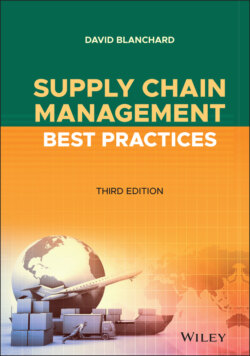Читать книгу Supply Chain Management Best Practices - David Blanchard - Страница 29
How to Prevent a Supply Chain Heart Attack
ОглавлениеNow, here's an example of how sabermetrics-style supply chain analysis can frame Coty's problems as part of a trend that goes far beyond the cosmetics industry. Two researchers—Vinod Singhal of the Georgia Institute of Technology and Kevin Hendricks of the University of Western Ontario—looked at more than 800 announcements of supply chain problems from public companies over an eight-year period (1992–1999).4 These problems included things like inventory write-offs, parts shortages, shipping delays, and the like. The researchers then tracked the price of these companies' stocks one year before and two years after the announcement.
So what happened? After all the numbers were crunched, a clear trend emerged: Companies that experienced supply chain glitches over that time period saw their average operating income drop 107%, return on sales fall 114%, and return on assets decrease by 93%. And that's not all: These companies also typically saw 7% lower sales growth, 11% higher costs, and a 14% increase in inventories. Exacerbating that already dismal situation is the fact that it takes a long time to recover from these disruptions.
“The supply chain disruption lowers the level of operating performance for a company, and then firms continue to perform at that lower level for the next couple of years,” Singhal explains. He says a supply chain disruption can be compared to a heart attack because it cuts off the flow of information and supplies to a company, and it can have long-term—and sometimes fatal—effects on a company's health.
It doesn't really matter which industry the company is in, either, because any company reporting a supply chain glitch will see its shareholder value plummet. Process manufacturers (e.g., chemicals, food and beverage, textiles) tend to suffer the biggest hit to shareholder return, with a 51% drop. Retailers experience an average decrease of 42%, while high-tech manufacturers will see a 27% decline. Smaller companies are usually hit harder than large ones, although the drop in income is enormous for any size company—150% for small companies, 86% for large.
“When people talk about supply chain management, they may agree that it's important, but they're not investing in solutions,” Singhal points out. However, even when companies do spend on solutions, they're not necessarily spending wisely. “One reason supply chain problems occur is because there isn't enough slack in the system,” Singhal notes. “As companies try to make their supply chains more efficient, they take away slack because it's expensive.”
The answer, though, isn't to throw a lot of money at your supply chain problems. It's to get smarter at identifying and tracking key performance indicators that might signal potential glitches early on. That means developing better forecasts and plans, collaborating with suppliers and customers, ensuring real-time visibility, building flexibility into your supply chain, and other best practices.
It's been said that “the most neglected pathway to increasing shareholder value runs through the supply chain.” In the book The New Supply Chain Agenda, the authors state, “Supply chain excellence drives shareholder value because it controls the heartbeat of the firm—the fundamental flow of materials and information from suppliers through the firm to its customers.” The problem is, there are way too many companies whose supply chains are “crippled by the lack of a strategy, the absence of talent, a misapplication of technology, internal and external silos, and a basic lack of discipline in managing change.” So Coty is hardly alone when it comes to supply chain problems resulting in a severe hit to a company's market value.5
